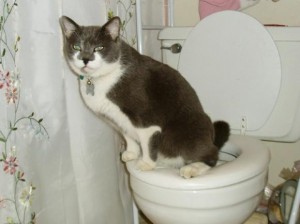Dangers of Flushing Cat Poop Down Your Toilet - Avoid Potential Issues
Dangers of Flushing Cat Poop Down Your Toilet - Avoid Potential Issues
Blog Article
The article author is making a number of great annotation regarding How to Dispose of Cat Poop and Litter Without Plastic Bags in general in this post further down.

Intro
As pet cat proprietors, it's essential to be mindful of how we take care of our feline close friends' waste. While it may seem hassle-free to purge cat poop down the toilet, this technique can have destructive repercussions for both the setting and human wellness.
Alternatives to Flushing
The good news is, there are more secure and a lot more accountable methods to get rid of pet cat poop. Consider the adhering to alternatives:
1. Scoop and Dispose in Trash
The most common approach of dealing with pet cat poop is to scoop it right into an eco-friendly bag and toss it in the trash. Make sure to use a specialized litter scoop and get rid of the waste immediately.
2. Usage Biodegradable Litter
Go with biodegradable pet cat litter made from products such as corn or wheat. These litters are environmentally friendly and can be securely disposed of in the trash.
3. Hide in the Yard
If you have a yard, think about burying feline waste in an assigned area far from veggie gardens and water resources. Make certain to dig deep enough to prevent contamination of groundwater.
4. Install a Pet Waste Disposal System
Invest in a pet garbage disposal system especially made for pet cat waste. These systems use enzymes to break down the waste, reducing odor and ecological impact.
Health and wellness Risks
Along with environmental issues, flushing feline waste can also pose wellness dangers to people. Cat feces might include Toxoplasma gondii, a bloodsucker that can trigger toxoplasmosis-- a possibly severe ailment, specifically for pregnant women and individuals with weakened body immune systems.
Ecological Impact
Flushing pet cat poop presents dangerous microorganisms and bloodsuckers right into the water, presenting a significant danger to water environments. These pollutants can adversely affect marine life and concession water high quality.
Verdict
Accountable pet ownership expands past offering food and sanctuary-- it additionally includes correct waste monitoring. By avoiding flushing cat poop down the bathroom and choosing alternate disposal methods, we can minimize our ecological impact and secure human wellness.
Why Can’t I Flush Cat Poop?
It Spreads a Parasite
Cats are frequently infected with a parasite called toxoplasma gondii. The parasite causes an infection called toxoplasmosis. It is usually harmless to cats. The parasite only uses cat poop as a host for its eggs. Otherwise, the cat’s immune system usually keeps the infection at low enough levels to maintain its own health. But it does not stop the develop of eggs. These eggs are tiny and surprisingly tough. They may survive for a year before they begin to grow. But that’s the problem.
Our wastewater system is not designed to deal with toxoplasmosis eggs. Instead, most eggs will flush from your toilet into sewers and wastewater management plants. After the sewage is treated for many other harmful things in it, it is typically released into local rivers, lakes, or oceans. Here, the toxoplasmosis eggs can find new hosts, including starfish, crabs, otters, and many other wildlife. For many, this is a significant risk to their health. Toxoplasmosis can also end up infecting water sources that are important for agriculture, which means our deer, pigs, and sheep can get infected too.
Is There Risk to Humans?
There can be a risk to human life from flushing cat poop down the toilet. If you do so, the parasites from your cat’s poop can end up in shellfish, game animals, or livestock. If this meat is then served raw or undercooked, the people who eat it can get sick.
In fact, according to the CDC, 40 million people in the United States are infected with toxoplasma gondii. They get it from exposure to infected seafood, or from some kind of cat poop contamination, like drinking from a stream that is contaminated or touching anything that has come into contact with cat poop. That includes just cleaning a cat litter box.
Most people who get infected with these parasites will not develop any symptoms. However, for pregnant women or for those with compromised immune systems, the parasite can cause severe health problems.
How to Handle Cat Poop
The best way to handle cat poop is actually to clean the box more often. The eggs that the parasite sheds will not become active until one to five days after the cat poops. That means that if you clean daily, you’re much less likely to come into direct contact with infectious eggs.
That said, always dispose of cat poop in the garbage and not down the toilet. Wash your hands before and after you clean the litter box, and bring the bag of poop right outside to your garbage bins.
https://trenchlesssolutionsusa.com/why-cant-i-flush-cat-poop/

I hope you liked our post about Don’t flush cat feces down the toilet. Thanks so much for spending some time to read our posting. Enjoyed our blog? Please share it. Let someone else find it. I praise you for your time. Don't hesitate to come visit our site back soon.
Call Today Report this page